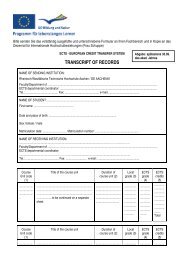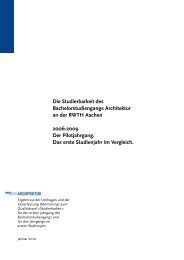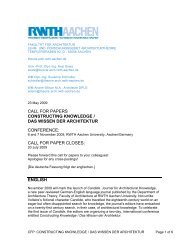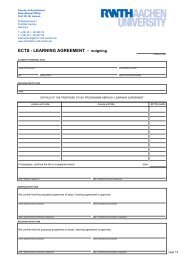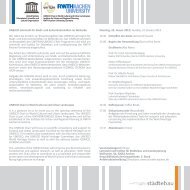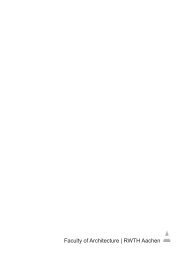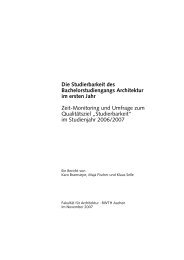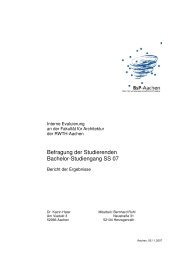Candide No.4 - RWTH Aachen - RWTH Aachen University
Candide No.4 - RWTH Aachen - RWTH Aachen University
Candide No.4 - RWTH Aachen - RWTH Aachen University
Erfolgreiche ePaper selbst erstellen
Machen Sie aus Ihren PDF Publikationen ein blätterbares Flipbook mit unserer einzigartigen Google optimierten e-Paper Software.
4<br />
Letter from the Editors<br />
The search for a reliable order of knowledge has always been a central<br />
concern of architecture theory. In order to move beyond changing<br />
tastes and modes of production, this search leads inevitably to those<br />
things that give us a sense of stability and continuity. Nothing,<br />
therefore, seems more obvious than to equate architectural knowledge<br />
with the knowledge of objects. But the objects of architecture are<br />
unmanageable. Their inventory is enormous. New exemplars are<br />
continuously added, and the individuality of each runs counter to the<br />
effort to set up systematic systems of classification. And yet, there<br />
hardly exists a more prominent term in architecture than typology,<br />
based on the notion of unchanging ideal types, prototypes, and archetypes.<br />
Typology as an approach is fueled by the promise of being<br />
able to sort and set up a stable order for architectural objects according<br />
to stylistic and functional similarities.<br />
It is a matter of chance that all five articles in this issue address orders<br />
of knowledge, each from a distinct perspective. The authors take<br />
the opportunity to critically test the limits of these orders. Michael<br />
Guggenheim closely analyzes the literature on the conversion of<br />
buildings and finds that the typological categories established in<br />
architecture are unable to grasp the dynamic processes of change of<br />
use in a meaningful way. Urs Füssler and Jörg Leeser propose<br />
expanding the notion of type by the dimension of time. They employ<br />
the concept of the dramatype in order to observe and develop the<br />
multitude of eclectic buildings that make up the city of Wuppertal.<br />
Irénée Scalbert points to the cunning of the bricoleur, whose inventive<br />
and wild thinking is stimulated less by typological ideals, but<br />
rather by having to make do with limited resources. Liam Ross looks<br />
at the influence of Scottish building regulations on the production of<br />
window types and discovers unimagined freedoms by closely reading<br />
between the lines of the code. Joachim Geil and Reinhard<br />
Doubrawa’s parable of the Assyrian Emperor and his architect<br />
reminds us that the relationship between building client and building<br />
designer is more archaic and enduring than any building type.<br />
This fourth issue of <strong>Candide</strong> is the first to be published by<br />
ActarBirkhäuser. We are grateful to the publishers for welcoming us<br />
into their program and look forward to the collaboration ahead.<br />
We hope that you, dear reader, find this volume stimulating and<br />
enriching.<br />
Axel Sowa and Susanne Schindler<br />
C4_Heft1.indd 4 01.08.11 12:34



